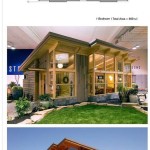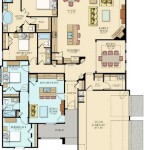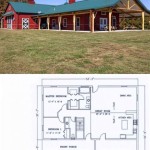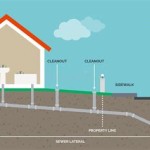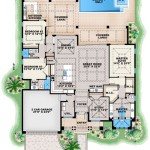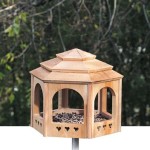Floor Plans for Duplex Homes: A Comprehensive Guide
Duplex homes, characterized by two separate living units within a single structure, present a unique housing option that can cater to diverse needs. From families seeking to live near relatives to investors looking for rental income opportunities, duplexes offer a compelling blend of privacy and proximity. The key to maximizing the potential of a duplex lies in a well-designed floor plan, one that optimizes space, ensures privacy, and addresses the specific requirements of both units.
This article delves into the intricacies of duplex floor plans, examining the factors that influence their design, the different layout options available, and the considerations essential for creating a functional and appealing living space for both occupants. Understanding these elements is crucial for homeowners, developers, and anyone interested in exploring the possibilities of duplex living.
Key Considerations in Duplex Floor Plan Design
Designing a successful duplex floor plan requires careful consideration of several factors, each impacting the overall functionality and appeal of the property. These key considerations include the target demographic, zoning regulations, architectural style, privacy concerns, and the intended use of each unit.
Target Demographic: The intended occupants of the duplex units significantly influence the floor plan design. For instance, if the duplex is aimed at young professionals, the units might prioritize open-concept living spaces and modern amenities. Conversely, if the target demographic is families with children, the floor plan should incorporate features such as multiple bedrooms, dedicated play areas, and ample storage space. Consider also the age and mobility of potential residents which can impact things like the need for accessible design features, such as ramps or wider doorways.
Zoning Regulations: Local zoning laws play a critical role in determining the permissible size, layout, and features of a duplex. These regulations may dictate minimum lot sizes, setback requirements, parking provisions, and building height restrictions. Before embarking on the design process, it is imperative to thoroughly research and understand the applicable zoning ordinances to ensure compliance and avoid costly revisions later on. Furthermore, zoning regulations may specify requirements for separate entrances, utility meters, and even landscaping.
Architectural Style: The architectural style of the duplex should harmonize with the surrounding neighborhood and reflect the preferences of the intended occupants. Common architectural styles for duplexes include contemporary, traditional, craftsman, and modern. The chosen style will influence the exterior appearance, interior layout, and material selection. For example, a craftsman-style duplex might feature exposed rafters, a front porch, and natural wood finishes, while a modern duplex might incorporate clean lines, large windows, and minimalist aesthetics.
Privacy Concerns: Ensuring adequate privacy for both units is paramount in duplex design. This involves careful placement of walls, windows, and entrances to minimize noise transmission and visual intrusion. Strategies to enhance privacy include staggering windows, incorporating buffer zones such as garages or storage areas between units, and utilizing soundproofing materials in walls and floors. Separate outdoor living spaces, such as patios or balconies, are also essential for providing residents with private areas for relaxation and recreation.
Intended Use: The intended use of each unit will influence the specific features and amenities required. If one unit is intended for owner occupancy and the other for rental, the owner's unit might be larger and more lavishly appointed. Alternatively, if both units are intended for rental, the floor plans might be more standardized and cost-effective. Consider factors such as the number of bedrooms and bathrooms, the size of the kitchen and living areas, and the provision of amenities such as in-unit laundry and storage. Also, think about the long-term maintenance and upkeep of both units when selecting materials and finishes.
Common Duplex Floor Plan Layouts
Several common floor plan layouts are employed in duplex design, each offering distinct advantages and disadvantages. The optimal choice depends on the specific site conditions, budget constraints, and the preferences of the homeowner or developer. The most prevalent layouts include side-by-side, stacked, and back-to-back configurations.
Side-by-Side: In a side-by-side duplex, the two units are situated adjacent to each other, sharing a common wall. This layout is often favored for its simplicity and cost-effectiveness. It allows for separate entrances, private yards, and a more traditional residential feel. However, side-by-side duplexes can suffer from noise transmission issues if the shared wall is not properly insulated. Furthermore, this layout may require a wider lot to accommodate the two units side-by-side. Parking can also be a challenge depending on the lot size and local regulations.
Stacked: A stacked duplex features one unit located above the other, similar to an apartment building. This layout is ideal for narrow lots and can maximize land usage. However, stacked duplexes require careful consideration of noise insulation between floors to minimize disturbances. Access to each unit is also a crucial factor, with separate entrances typically located on different sides of the building. This type of layout can also be more challenging for residents with mobility issues, as one unit will inevitably require navigating stairs. From a construction perspective, stacked units can be more complex due to shared structural elements and utility systems.
Back-to-Back: This layout places the units behind each other, sharing a central wall that typically houses utilities and common areas like stairwells. It can be a good solution for deeper, narrower lots. Back-to-back duplexes are less common than side-by-side or stacked configurations, but can offer a good balance of privacy and space efficiency. Privacy can be well-maintained with careful design, as can separate outdoor spaces. Similar to the side-by-side layout, noise transmission through the shared wall requires attention to insulation and construction techniques.
Essential Elements of a Functional Duplex Floor Plan
Beyond the overall layout, several essential elements contribute to the functionality and livability of a duplex floor plan. These include separate entrances, private outdoor spaces, adequate parking, sufficient storage, and efficient utility systems.
Separate Entrances: Providing separate and distinct entrances for each unit is crucial for maintaining privacy and independence. These entrances should be clearly defined and aesthetically pleasing, creating a sense of ownership and individual identity for each resident. Consider adding features like covered porches or entryways to provide shelter from the elements and enhance the curb appeal of each unit. The location of entrances should also consider the overall flow and accessibility of the property, avoiding awkward or congested entry points.
Private Outdoor Spaces: Access to private outdoor spaces, such as patios, balconies, or yards, is essential for enhancing the quality of life for duplex residents. These spaces provide areas for relaxation, recreation, and outdoor dining. Consider the size and orientation of the outdoor spaces to maximize sunlight exposure and create a comfortable environment. Landscaping can also play a significant role in enhancing privacy and creating visual appeal. Fencing or hedges can be used to delineate the boundaries of each unit's outdoor space.
Adequate Parking: Sufficient parking is a critical consideration, particularly in urban or suburban areas with limited street parking. Local zoning regulations may specify minimum parking requirements for duplexes. The number of parking spaces should be adequate for the number of residents and their guests. Consider providing covered parking options, such as garages or carports, to protect vehicles from the elements. The layout of parking areas should also be carefully planned to ensure easy access and maneuverability.
Sufficient Storage: Ample storage space is essential for maintaining an organized and clutter-free living environment. Duplex floor plans should incorporate sufficient closet space in bedrooms and hallways, as well as storage areas for seasonal items, recreational equipment, and other belongings. Consider providing additional storage options, such as garages, sheds, or attic space. The placement of storage areas should be convenient and accessible to residents.
Efficient Utility Systems: Efficient utility systems are essential for minimizing energy consumption and reducing operating costs. Duplexes can be equipped with separate utility meters for each unit, allowing residents to pay for their own usage. Alternatively, a single meter can be used, with the costs split between the residents based on a pre-agreed formula. Consider implementing energy-efficient features, such as high-efficiency appliances, insulation, and windows, to reduce energy bills. The placement of utility systems, such as HVAC units and water heaters, should be carefully planned to minimize noise and visual impact on the living spaces.
Designing effective floor plans for duplex homes involves navigating a multifaceted landscape of considerations, from local regulations to target demographics. These considerations ultimately influence the livability, privacy, and profitability of the investment. By carefully weighing these variables and thoughtfully applying design principles, developers and homeowners can create duplexes that are both functional and desirable, meeting the needs of residents and contributing positively to the community.
House Plan Of The Week Multigenerational Duplex Builder

Duplex House Plans Floor Garage

Duplex House Plans Multi Family Living At Its Best Dfd Blog

Fordyce Crest Multi Family Home House Plans Duplex Floor And More
Top 10 Duplex Plans That Look Like Single Family Homes Houseplans Blog Com

Duplex Plan 5283
House Plan Of The Week Multigenerational Duplex Builder

Top 10 Duplex Plans That Look Like Single Family Homes Houseplans Blog Com

63 Duplex House Plans Ideas

Discover The Best Duplex Designs Floor Plans For Your Dream Home Beautiful Homes
Related Posts


